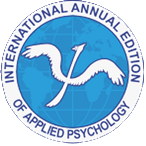International Psychology and Scientific Psychology: At the Crossroads for the Future of Psychology
Abstract
The discipline of psychology as a science and the newly emerging field of international psychology are at a crossroads in terms of a conflict that has developed in their views. By means of comparative analysis, this article examines how the proponents of international psychology describe their area, how that description conflicts with the concept of psychology as a science, and what that conflict means for the development of psychology as an overall discipline. The analysis reveals weaknesses in the way international psychology has presented itself, and in the objectives it proposes, which, if followed, could lead to failure in achieving those objectives, and in collateral damage to the way psychology is regarded by researchers outside the field of psychology. This article ends with several prescriptions for the future of international psychology, including suggestions for revising the way international psychology should be conceived, such as regarding its relationship with cross-cultural psychology to be complementary rather than disparate, that it should adjust its objectives to be more attainable, and, especially, that it should accept rather than reject psychology as a science.
[1] Taormina, R.J. Social and Personality Correlates of Gambling Attitudes and Behavior among Chinese Residents of Macau. Journal of Social and Personal Relationships, 2009, 26, 8, 1047-1071.
[2] Triandis, H.C. The Psychological Measurement of Cultural Syndromes. American
Psychologist, 1996, 51, 4, 407-415.
[3] Allwood, C.M., & Berry, J.W. Origins and Development of Indigenous Psychologies: An International Analysis. International Journal of Psychology, 2006, 41, 4, 243-268.
[4] Oxford English dictionary. http://www.oed.com/view/Entry/172672?redirectedFrom=science#eid
[5] Pavlov, I.P. The Work of the Digestive Glands, London: Griffin, 1897/1902. 223 pages.
[6] Skinner, B.F. The Behavior of Organisms: An Experimental Analysis. New York: Appleton-Century-Crofts, 1938. 457 pages.
[7] Durham, A.C., & Ridgway, E.B. Control of Chemotaxis in Physarum Polycephalum. Journal of Cell Biology, 1976, 69, 1, 218-223.
[8] Brock, A.C. (Ed.). Introduction (pp. 1-15) in Internationalizing the History of Psychology. New York: New York University Press, 2006. 260 pages.
[9] Marx, M.H., & Hillix, W.A. Psychology’s Place in Science (pp. 28-56) in Systems and Theories in Psychology. New York: McGraw-Hill, 1973. 626 pages.
[10] Gergen, K.J., Gulerce, A., Lock, A., & Misra, G. Psychological science in cultural context. American Psychologist, 1996, 51, 5, 496-503.
[11] Stevens, M. J., & Wedding, D. (Eds.). Handbook of International Psychology. New York: Routledge, 2004. 526 pages.
[12] Freud, S. Zur Psychopathologie des Alltagslebens (The Psychopathology of Everyday Life), Berlin: Karger, 1901. 344 pages.

